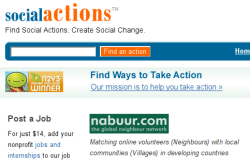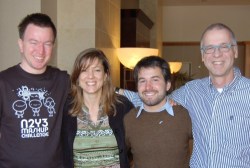“A Case For Open Data”
Yesterday, Adam DuVander wrote on ProgrammableWeb about “A Case For Open Data In Transit”, a 6-minute film about public transit agencies opening up their data. The Streetfilm production provides some excellent examples and quotes to also make the case for (more) open data in international development aid. As Tim O’Reilly puts it: government should be a platform for society to build on.
The Dutch government spends quite a bit of money on international development aid (0.8% of GNI, one of a handful of countries to live up to their commitment 1). As everywhere, people want to know more and more how that money is spent, and what results are achieved. So the Ministry of Foreign Affairs regularly produces a Resultatenrapportage (Results report, or ResRap).
The report-writing for the period 2009-2010 has just begun, and should also result in “an interactive website”. As a member of the web advisory group, I hope to help push the notion of “interactive” a bit beyond clickable maps and animated charts.
Following initiatives like DFID’s project information in the UK, the Open Government policy as applied in the US, it would allow Dutch information on development aid to be aggregated in detail in websites like AidData, or build on work done on standards and datasets in groups such as OKFN’s Working Group on Open Knowledge in Development.
“ A Case For Open Data In Transit”:
- Transit agencies for a long time felt that they needed to be the source of information for their customers. But once they opened up their data, customers suddenly got a lot more choice in getting the information they needed. Without extra cost for the transit agency.
- Would you have thought of developing an electronic sign board for a coffee shop to show the times of upcoming buses at the bus stop in front of them?
- The New York MTA went from suing people for re-using their data to engaging with developers.
- Tim O’Reilly asks government to move away from seeing themselves as a service vending machine, but let others deliver those services. Instead: be a platform. “Do the least possible, not the most possible, to enable others to build on what you do.” You’ll create “the capabilities for people to say: ‘We did it ourselves’”
1 Both within the UN and the EU, countries have pledged to spend at least 0.7% of their GNI on official development assistance, http://en.wikipedia.org/wiki/Development_aid

 I think I first met
I think I first met  It’s the outcome of a meeting Siegfried and I had at NetSquared with Peter,
It’s the outcome of a meeting Siegfried and I had at NetSquared with Peter,  A while ago I was asked to help answer an interesting question. Imagine: you want your website (and organisatuon) to become
A while ago I was asked to help answer an interesting question. Imagine: you want your website (and organisatuon) to become